
A Comprehensive Guide on How to Wash Bath Toys: Ensuring Hygiene with Fun
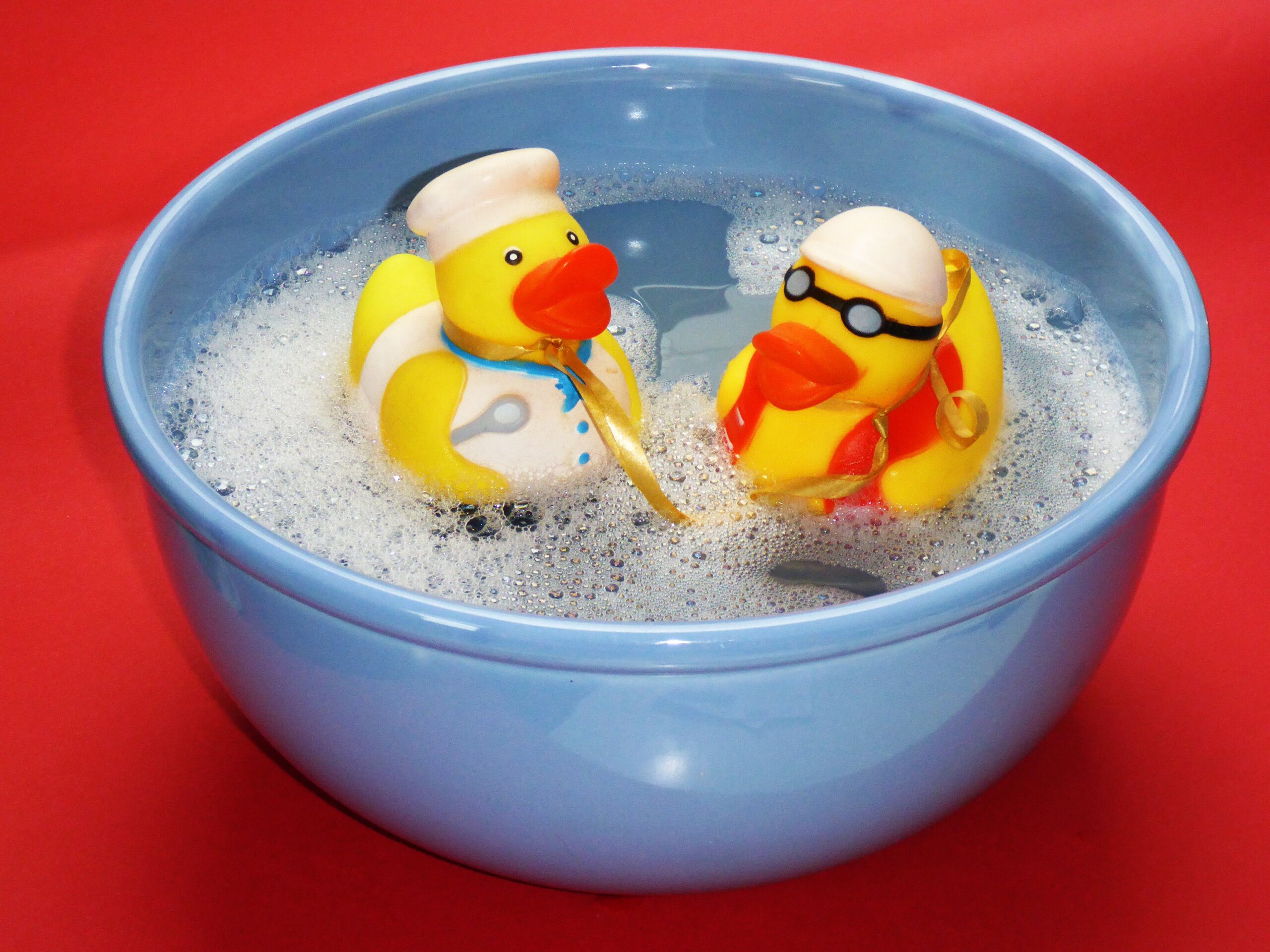

Bath time is not only a fun and exciting activity for children but also a crucial part of their daily hygiene routine. Splashing in the warm water and playing with colorful bath toys can turn an ordinary bath into an imaginative adventure. However, in the midst of all the laughter and play, many parents overlook the importance of cleaning their child’s bath toys regularly.
In this article, we will explore why cleaning bath toys is essential, how to determine toy cleanliness, how to wash bath toys with basic cleaning methods, deep cleaning techniques, and the best bath toys to buy for easy maintenance.
Why is it Important to Clean Bath Toys?
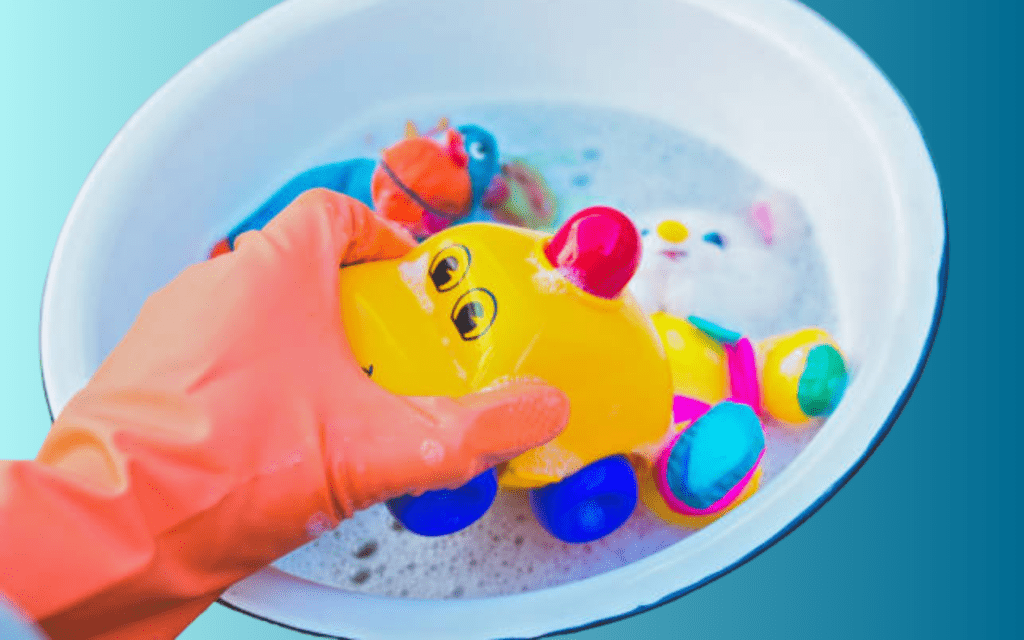
Dirty bath toys can pose potential health risks to children. When bath toys are left wet and dirty, they become breeding grounds for mold, mildew, and bacteria. These contaminants can cause various health issues, including skin irritations, respiratory problems, and even infections. By maintaining a clean and hygienic bath toy collection, parents can ensure their child’s safety during bath time and promote a healthy environment.
Besides, teaching children about the importance of cleanliness and hygiene from an early age is crucial. By involving them in the cleaning process of their bath toys, you instill good habits and responsibility. They learn that keeping their toys clean is not only about fun but also about taking care of their health. This lesson can extend beyond bath time, encouraging them to maintain cleanliness in other areas of their lives.
When Should You Clean Bath Toys?
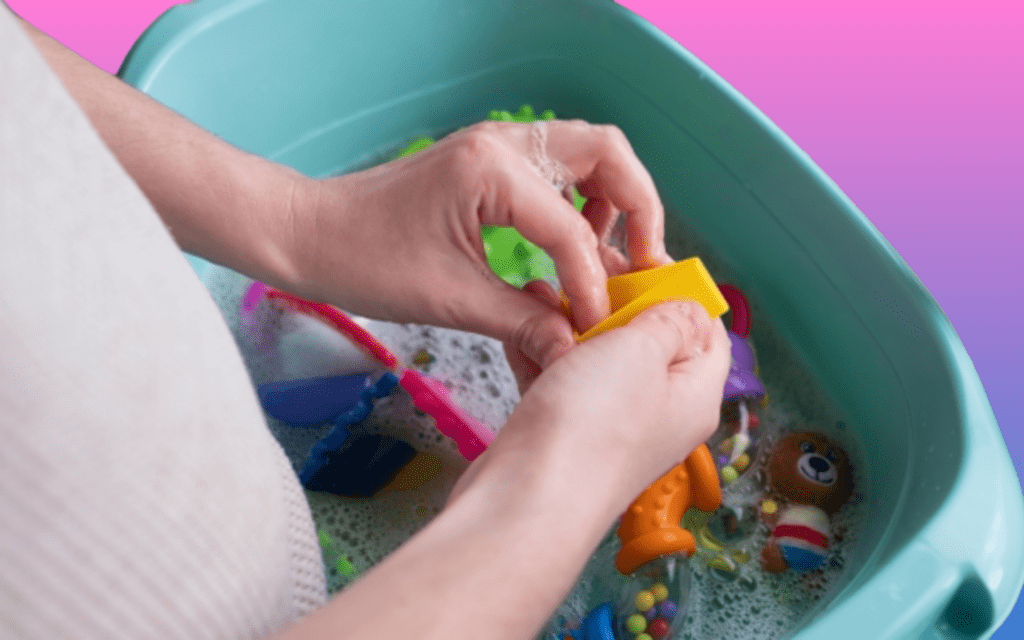

Assessing the cleanliness of bath toys is crucial to identify if they need cleaning. Visible signs of dirt, mold, or mildew should be looked for. Check for any discoloration, dark spots, or slimy residues on the toys. Additionally, it’s essential to be aware of hidden dirt or contaminants that may not be easily visible. Squeeze the toys to see if any water or gunk comes out, and inspect any small openings or crevices for trapped debris.
Basic Cleaning Methods
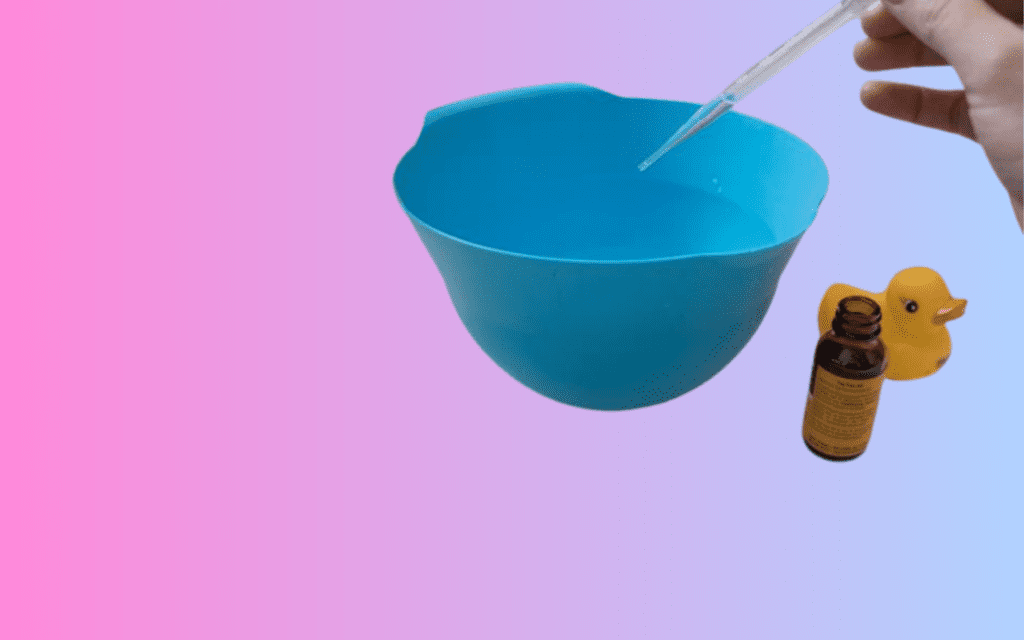

Regular maintenance of bath toys can be easily achieved through simple and quick cleaning techniques. These methods help remove surface dirt, soap scum, and other residues that may accumulate during bath time. Let’s explore the step-by-step instructions on how to wash bath toys properly:
- Rinse the Toys: Start by rinsing the bath toys thoroughly with warm water. This initial rinse helps remove any loose debris, soap residue, or dirt on the surface of the toys. Hold each toy under the running water, ensuring that all sides are thoroughly rinsed.
- Prepare a Cleaning Solution: Create a solution of mild soap and warm water in a basin or sink. Choose a mild, child-friendly soap that is gentle on the toys and safe for your child’s skin. Avoid using harsh chemicals or abrasive cleaners that may damage the toys or leave behind harmful residues.
- Submerge the Toys: Place the bath toys into the basin or sink filled with the soap and water solution. Ensure that all the toys are fully submerged, allowing the cleaning solution to penetrate all the nooks and crannies of the toys.
- Scrub Gently: Use a soft brush or sponge to scrub the bath toys gently. Pay extra attention to areas with visible dirt, soap scum, or residue. Scrub in circular motions to effectively remove any grime or debris that may have accumulated on the toys’ surfaces. If the toys have small openings or crevices, use the brush or sponge to reach those areas and clean them thoroughly.
- Rinse Thoroughly: After scrubbing the toys, rinse them thoroughly under warm running water. Ensure that all the soap residue is completely removed from the toys. Residual soap can cause skin irritations or leave behind a sticky film on the toys’ surfaces.
- Air Dry Completely: Once the toys are rinsed, shake off any excess water and place them on a clean towel or drying rack to air dry completely. It’s important to allow the toys to dry thoroughly before storing them away or returning them to the bath area. Damp or wet toys can encourage the growth of mold and mildew, undoing the cleaning efforts.
- Periodic Inspection: While cleaning the bath toys, take the opportunity to inspect them for any signs of wear and tear. Check for any loose parts, cracks, or damage that may pose a safety hazard to your child. If you find any damaged toys, it’s best to discard or replace them to ensure your child’s safety.
Deep Cleaning Techniques
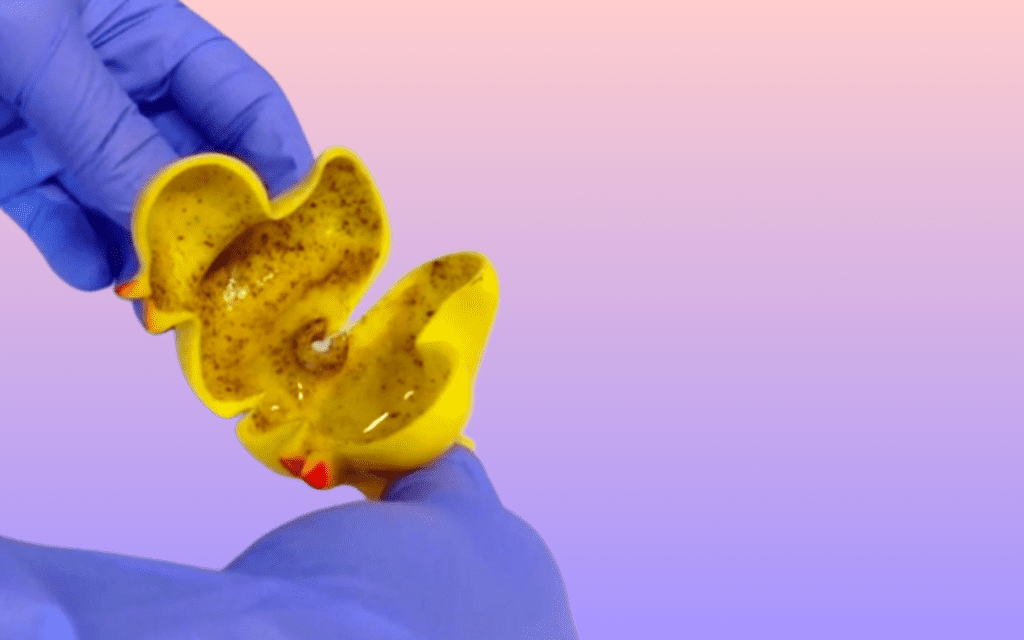

While regular basic cleaning methods are effective for day-to-day maintenance, periodic deep cleaning is necessary to eliminate stubborn dirt, mold, and bacteria that may accumulate on bath toys over time. Here are some deep cleaning techniques that can be used to ensure a thorough and effective clean:
Cleaning the Inside of Bath Toys
While the exterior of bath toys is relatively easy to clean, the inside can often be a breeding ground for mold, mildew, and trapped water. It’s essential to periodically clean the inside of bath toys to maintain their hygiene. Here’s a step-by-step guide on how to clean the inside of bath toys:
- Inspect for Openings: Check the bath toys for any openings or holes that may allow water to enter and get trapped inside. Squeezable toys, squirters, or toys with detachable parts are more likely to have openings that require cleaning.
- Squeeze Out Water: Squeeze the toy firmly to expel any trapped water inside. Repeat this process several times to ensure that most of the water is removed.
- Create a Cleaning Solution: Prepare a mixture of equal parts white vinegar and warm water in a basin or bucket. The acidic nature of vinegar helps to kill mold and mildew.
- Submerge the Toys: Submerge the bath toys in the vinegar solution, ensuring that the solution enters the openings and fills the interior. If necessary, squeeze the toys while submerged to allow the solution to penetrate further.
- Soak the Toys: Allow the toys to soak in the vinegar solution for approximately 15 to 20 minutes. This soaking period helps to break down any mold, mildew, or bacteria present inside the toys.
- Shake and Rinse: After soaking, remove the toys from the vinegar solution and vigorously shake them to dislodge any loosened contaminants. Rinse the toys thoroughly under warm running water to flush out the vinegar solution and any remaining residue.
- Dry Completely: Once rinsed, squeeze out any excess water from the toys and place them on a clean towel or drying rack. Allow them to air dry completely before using or storing them. Ensure that both the exterior and interior of the toys are completely dry to prevent mold or mildew growth.
It’s important to note that this cleaning method is most suitable for bath toys that can tolerate exposure to vinegar. Always check the manufacturer’s instructions or product label to ensure compatibility.
Cleaning Bath Squeeze Toys
Bath squeeze toys, such as rubber ducks or squishy animals, are popular choices for bath time fun. However, their design with small openings can make them prone to mold and mildew growth if not cleaned regularly. Here’s a step-by-step guide on how to clean bath squeeze toys effectively:
- Inspect the Toys: Before cleaning, inspect the squeeze toys for any visible signs of mold, mildew, or discoloration. If you notice any significant mold growth or deterioration, it’s best to replace the toy rather than attempting to clean it.
- Prepare a Cleaning Solution: Fill a basin or sink with a mixture of warm water and mild soap. Ensure that the soap is gentle and safe for both your child and the toys.
- Submerge the Toys: Submerge the bath squeeze toys in the soapy water, ensuring that they are fully covered. Squeeze the toys gently to allow the soapy water to enter the openings and reach the inside.
- Clean the Exterior: Use a soft cloth or sponge to wipe down the exterior of the toys, paying attention to any visible dirt, grime, or residue. Squeeze and release the toys to help flush out any trapped water or debris.
- Focus on the Openings: To clean the inside of the squeeze toys, prepare a vinegar solution by mixing equal parts white vinegar and warm water. Fill a clean squeeze bottle or syringe with the vinegar solution.
- Inject the Vinegar Solution: Insert the nozzle of the squeeze bottle or syringe into the openings of the bath toys. Gently squeeze the vinegar solution into the toys, ensuring that it reaches all areas inside. This will help kill any mold, mildew, or bacteria present.
- Let It Sit: Allow the vinegar solution to sit inside the toys for about 10 to 15 minutes. This dwell time helps to break down any remaining contaminants.
- Rinse Thoroughly: After the dwell time, thoroughly rinse the toys under warm running water. Squeeze and release the toys repeatedly while rinsing to flush out the vinegar solution and any loosened residue.
- Dry Completely: Squeeze out any excess water from the toys and place them on a clean towel or drying rack. Ensure that both the exterior and interior of the toys are completely dry before using or storing them. This step is crucial in preventing mold and mildew growth.
- Regular Maintenance: To prevent the accumulation of water inside the squeeze toys, it’s recommended to squeeze out as much water as possible after each use. Allow the toys to air dry completely before storing them in a dry and well-ventilated area.
Remember to clean bath squeeze toys regularly, ideally at least once a week, to prevent mold growth and maintain their cleanliness. If you notice persistent mold or mildew issues despite regular cleaning, it may be necessary to replace the toys or consider alternative bath toy options.
What Type of Bath Toys Should You Buy?
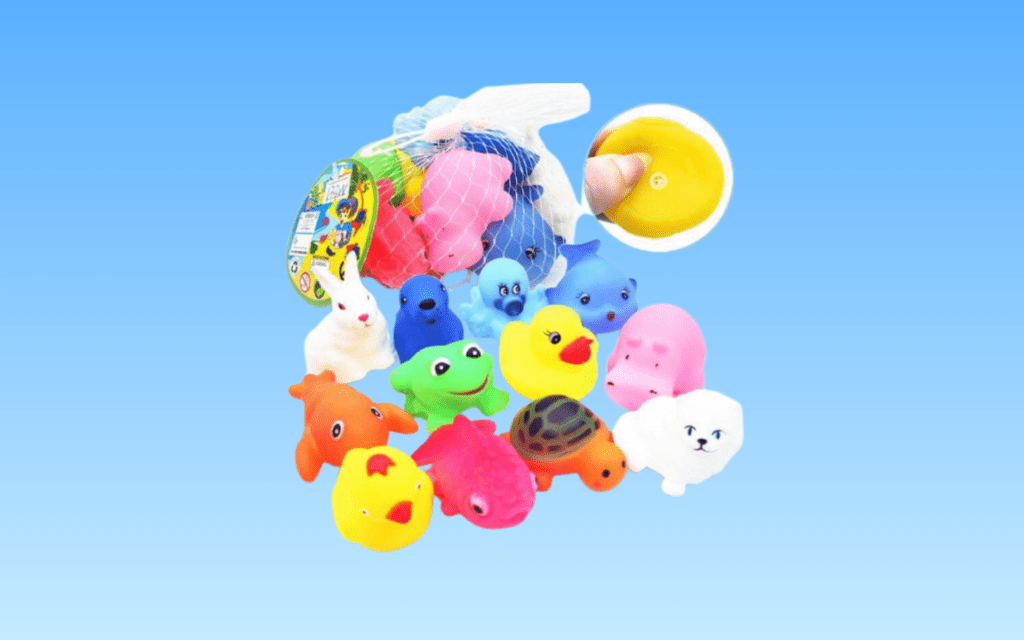

Choosing the right bath toys for your child is important for their enjoyment, development, and overall safety during bath time. Here are some factors to consider when selecting bath toys:
Choose According to the Age
Consider your child’s age and developmental stage when selecting bath toys. Look for toys that are specifically designed for their age group. Toys with small parts or complex mechanisms may not be suitable for younger children who are still exploring with their hands and mouths. Age-appropriate toys ensure that your child can safely interact with and enjoy their bath toys.
Consider Sensory Bath Toys
Bath time provides a great opportunity for sensory exploration. Consider choosing bath toys that engage multiple senses. Look for toys with different textures, colors, and shapes that stimulate your child’s tactile and visual senses. Toys that make sounds or have water-spraying features can also enhance the sensory experience during bath time.
Pick Easy-to-Clean Bath Toys
Opt for bath toys that are easy to clean and maintain. As mentioned earlier, solid plastic toys without openings or crevices are generally easier to clean. Avoid toys with intricate designs or detachable parts that can be challenging to clean thoroughly. Choosing toys that can be easily wiped down, rinsed, and air-dried simplifies the cleaning process and promotes better hygiene.
Stay Away from Squeezable Toys with Openings
Squeezable bath toys, such as rubber ducks or squirters, are popular choices for bath time fun. However, these toys often have small holes or openings that can accumulate water inside, leading to mold and mildew growth. If you want to buy squeezable toys, look for ones with sealed bottoms or those that can be easily opened and cleaned. Regularly inspect these toys for any signs of mold or deterioration, and replace them if necessary.
Check the Toy Material
Consider the material of the bath toys, as it can impact their durability, safety, and ease of cleaning. Look for toys made of non-toxic, BPA-free materials that are safe for your child. Solid plastic, silicone, or natural rubber are often good choices. Avoid toys made of materials that can absorb water and are difficult to dry, as they are more prone to mold and mildew growth.
It’s also a good practice to read product labels, reviews, and safety guidelines provided by the manufacturer when choosing bath toys. These resources can provide valuable information about the toy’s suitability, recommended age range, and any specific cleaning or maintenance instructions.
Conclusion
Keeping bath toys clean is essential for maintaining a safe and hygienic environment for your child. By regularly assessing the cleanliness of the toys and following basic cleaning methods, parents can prevent the growth of mold, mildew, and bacteria. Periodic deep cleaning using vinegar, bleach solutions, or hydrogen peroxide is also crucial to eliminate stubborn contaminants.
Additionally, choosing bath toys that are easy to clean and maintain will make the process much simpler. By following these guidelines on how to wash bath toys, you can ensure your child’s bath time remains a fun and healthy experience.



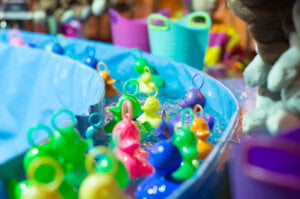
Your article helped me a lot, is there any more related content? Thanks! https://accounts.binance.com/uk-UA/register?ref=W0BCQMF1
Can you be more specific about the content of your article? After reading it, I still have some doubts. Hope you can help me. https://accounts.binance.com/el/register?ref=IQY5TET4
Can you be more specific about the content of your article? After reading it, I still have some doubts. Hope you can help me.
I don’t think the title of your article matches the content lol. Just kidding, mainly because I had some doubts after reading the article. https://accounts.binance.com/zh-TC/register?ref=VDVEQ78S
Thanks for sharing. I read many of your blog posts, cool, your blog is very good.
Thank you for your sharing. I am worried that I lack creative ideas. It is your article that makes me full of hope. Thank you. But, I have a question, can you help me?
Your point of view caught my eye and was very interesting. Thanks. I have a question for you.
I’m really impressed together with your writing abilities as well as
with the structure for your blog. Is this a paid
subject or did you customize it your self? Anyway keep up the excellent high quality
writing, it is rare to look a nice weblog like this one today.
Tools For Creators!
Thanks for sharing. I read many of your blog posts, cool, your blog is very good.
Your article helped me a lot, is there any more related content? Thanks!
I don’t think the title of your article matches the content lol. Just kidding, mainly because I had some doubts after reading the article.
Thanks for sharing. I read many of your blog posts, cool, your blog is very good.
Thank you for your sharing. I am worried that I lack creative ideas. It is your article that makes me full of hope. Thank you. But, I have a question, can you help me?
Thanks for sharing. I read many of your blog posts, cool, your blog is very good.
Thanks for sharing. I read many of your blog posts, cool, your blog is very good.
I don’t think the title of your article matches the content lol. Just kidding, mainly because I had some doubts after reading the article.
Thanks for sharing. I read many of your blog posts, cool, your blog is very good.
Your article helped me a lot, is there any more related content? Thanks!
Thanks for sharing. I read many of your blog posts, cool, your blog is very good.
Your article helped me a lot, is there any more related content? Thanks!